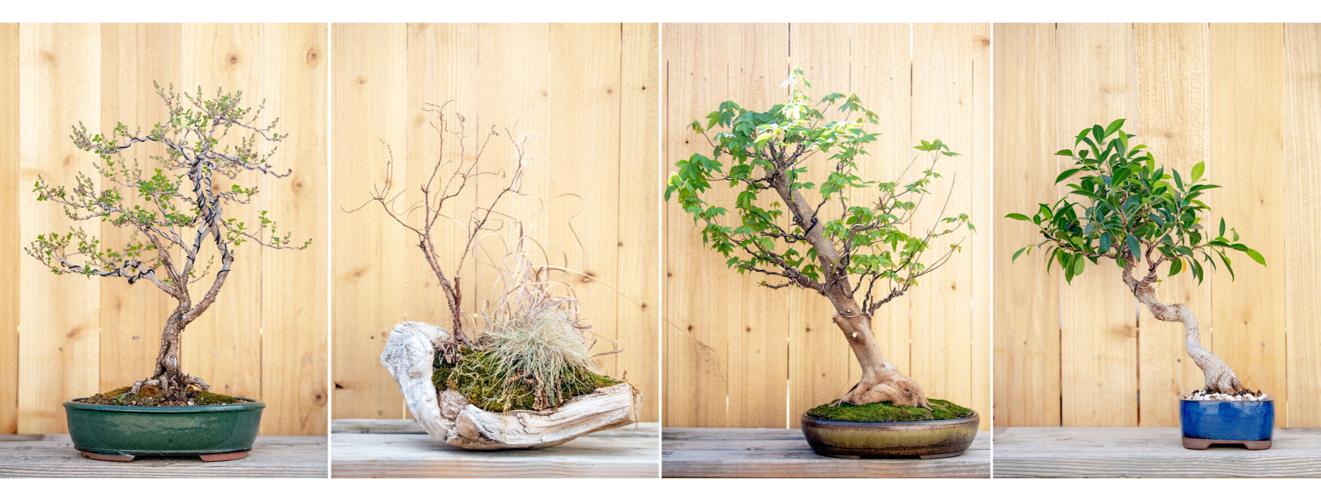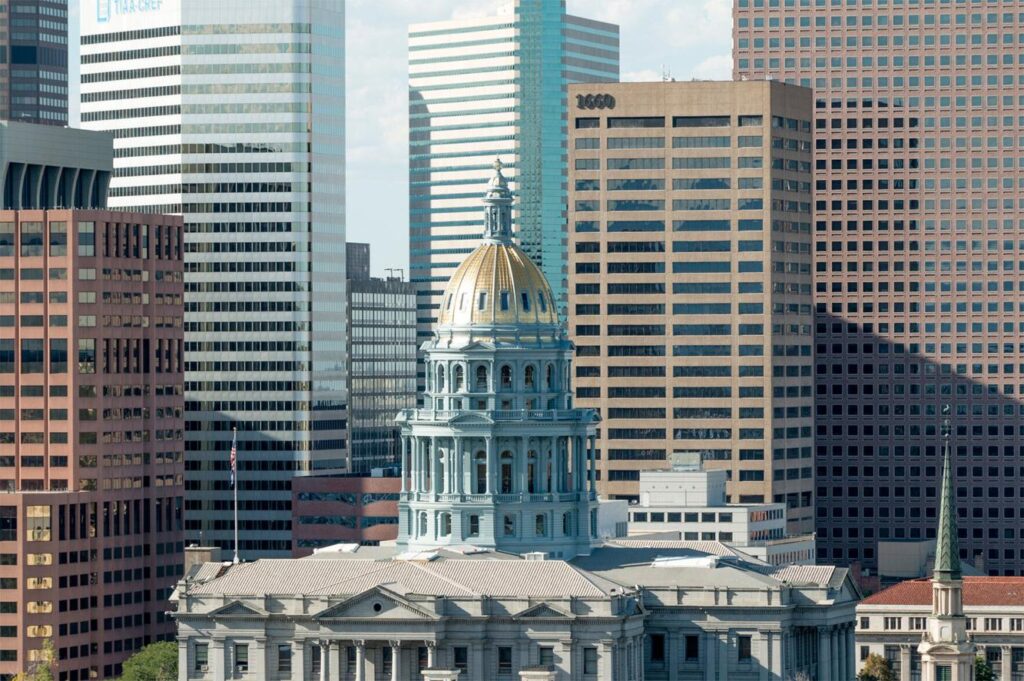Bonsai’s roots and growth in Colorado, from internment camps to ‘spreading the spirit’
Colorado Springs Bonsai enthusiast David Kuntz has practiced bonsai for more than 20 years, at times with hundreds of trees in his possession. Bonsai has been one hobby in this pandemic era that has been noted for a global surge in interest, growing far beyond its Chinese and Japanese roots. (Video by Skyler Ballard/ The Gazette)
{
“@context”: “https://schema.org”,
“@type”: “VideoObject”,
“name”: “LIFE | Bonsai’s roots and growth in Colorado”,
“description”: “Colorado Springs Bonsai enthusiast David Kuntz has practiced bonsai for more than 20 years, at times with hundreds of trees in his possession. Bonsai has been one hobby in this pandemic era that has been noted for a global surge in interest, growing far beyond its Chinese and Japanese roots. (Video by Skyler Ballard/ The Gazette)”,
“thumbnailUrl”: “https://bloximages.newyork1.vip.townnews.com/denvergazette.com/content/tncms/assets/v3/editorial/2/97/297627aa-a113-58e6-9c57-285742eb8b39/640a5e320364f.image.jpg?resize=1396%2C785”,
“uploadDate”: “2023-03-16T22:00:00-06:00”,
“contentUrl”: “https://cdn.field59.com/GAZETTE/7680f3216306efccceaf459aaca0157ce6d15171_fl9-360p.mp4”
}
Once, David Kuntz left a tree in the care of his family. Not just any tree, but one of his bonsai trees — one yearslong creation requiring constant watering and meticulous trimming and wiring to contort the trunk and branches in artistic fashion.
Kuntz returned home from a trip to find the tree dead. “I lost it on my family,” he says.
He recalls his incredulous father-in-law, who asked something along the lines of: “How could you get so mad over a tree?”
To which Kuntz replied: “To me, it wasn’t just a tree. It was a friend.”
So goes the relationship for some in this curious horticultural hobby. Bonsai has been one hobby in this pandemic era that has been noted for a global surge in interest, growing far beyond its Chinese and Japanese roots.

Left: David Kuntz poses with a collection of bonsai trees for a portrait at his home in Colorado Springs on Feb. 28. Kuntz has practiced bonsai for more than 20 years, at times with hundreds of trees in his possession. Bottom: Copper wire is wrapped around on of Kuntz’s bonsai trees. Bonsai creators often use wire to shape and twist the growth of trunks and branches.
Having practiced bonsai for 20-plus years — about half of that in Colorado Springs with sometimes hundreds of trees in his yard and greenhouse — Kuntz has noticed more newcomers. “People kind of feeling like they’ve been out of touch with nature,” he suspects.
Mountain bike park returning to former glory this summer in Colorado
That’s bonsai for him: a way to connect with nature. That’s bonsai for most, says Larry Jackel, the longtime specialist who tends to the collection at Denver Botanic Gardens.
“Bonsai is really a suggestion of a wild tree that you see in nature,” Jackel says.
A tree that you might see, for example, high on Mount Evans’ Mount Goliath Natural Area. Some of those bristlecone pines are more than 1,000 years old, having endured the rocky soil and extreme elements above 11,000 feet.

Bristlecone pines are recognized as the oldest non-clonal species on Earth. Visitors can view a population of these gnarled trees at Mount Goliath Natural Area about an hour west of Denver.
That twisted, grotesque timber serves as an ultimate aesthetic inspiration for Colorado’s bonsai enthusiasts, Jackel says. As do other resilient species growing amid the state’s rock and wind: gnarled ponderosa pine and Rocky Mountain juniper, among others. They call to scavengers in the old Japanese tradition of yamadori, meaning a collection from mountains.
The term bonsai (pronounced bones-eye) translates closely to “tree in a pot.” It’s a simple term for a craft that is anything but.
Increases along 'road less traveled,' but mostly visitation drops at national parks in Colorado
It’s a craft that requires obsession for those seeking mastery — a demanding mix of persistence and patience, of knowing how a tree grows, how to manipulate that with wire, how to trim, and knowing when to wait for growth, often allowing seasons to pass before more touch-ups.
Kuntz will display a tree that he’s proud of — he joins the annual exhibit at Denver Botanic Gardens — but he says he’ll never see a project complete in his life. He points to one in his Colorado Springs yard, one he inherited from a previous artist. It’s been in the works for 45 years, Kuntz says. “That’s pretty normal.”

Copper wire is wrapped around one of David Kuntz’s bonsai trees. Bonsai creators often use wire to shape and twist the growth of trunks and branches.
Bonsai is a Japanese term, though the craft is known to have been imported from China possibly around 1100 A.D. That’s according to a detailed history by Doug Hawley for the American Bonsai Society.
He traces Japan’s interest to Zen Buddhist philosophy, with the trees “representing harmony and oneness with nature.” He traces development through the Kamakura, Muromachi and Tokugawa (1603-1867) eras.
That latter century saw styles called Tako-tsukuri (“octopus”) and Horai, which took “twisting and curving to the extreme,” Hawley writes. Also at the time, consumer demand rose for shimpaku, meaning “true juniper,” emboldening shimpaku hunters to risk their lives collecting from cliffs and mountainsides.
Hawley credits the 1920s for a proliferation of literature, exhibits and retail sales. But bonsai’s growth in America was abruptly halted by World War II, when Japanese-American practitioners and sellers were confined to internment camps. One of these was Fumiko Nagata, whose sizable collection at the time met its demise while he was imprisoned at Camp Amache in southeast Colorado.

David Kuntz admires a Tiger Bark Ficus. He joked that someone once asked if he talked to his trees. His response: “Man, that would be crazy to talk to trees. But I listen to everything they have to say.”
Another was George Fukuma, who is credited for helping to form one of America’s earliest bonsai clubs at the tail end of the war. That was in 1945 in Denver. (The American Bonsai Society was established in 1967 and today counts more than 200 clubs across the country.)
When he came to Denver in 1976, Jackel knew the local club as “the senior club.” It was reserved for Japanese men who only spoke Japanese. Jackel was accepted into the junior club, which was started by men who broke from their secretive counterparts.
In a renegade move, they sought to teach and encourage Americans. In the trees, perhaps they saw forgiveness of the brutal past, or perhaps a lesson of grace, of harmony and oneness.
“They were asked by the senior club, ‘Why are you doing this?’” Jackel recalls. “They said, ‘Because the spirit of bonsai should be spread.’”
The junior club became today’s Rocky Mountain Bonsai Society. Spreading the spirit is still the goal, Jackel says.
'Visioning effort' launches ahead of plan for Colorado 14ers
It’ll be the goal of the American Bonsai Society’s National Convention, which is coming to Denver the second weekend of June.
Sharing has been the goal of Kuntz, who has led bonsai demonstrations in the Springs. Just as he was once faced with incredulous questions from family about a dead tree, he’s been asked by other observers about the tender care they see as odd.
“I had a guy joke at a demo once. He goes, ‘Do you talk to all your trees?’” Kuntz recalls. “I go, ‘Man, that would be crazy to talk to trees. But I listen to everything they have to say.’”



















